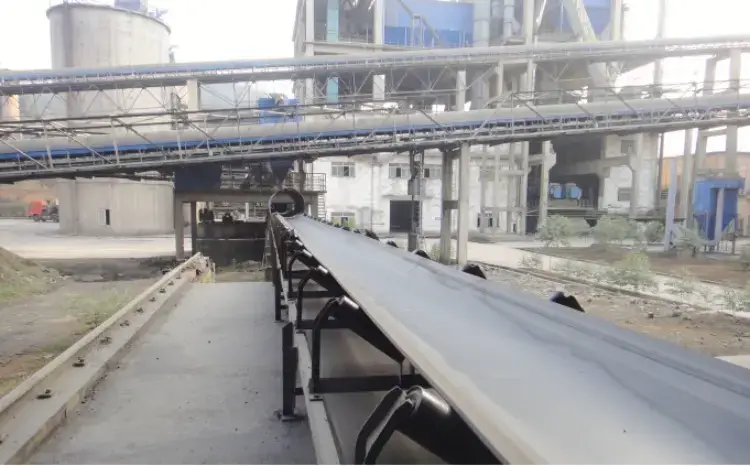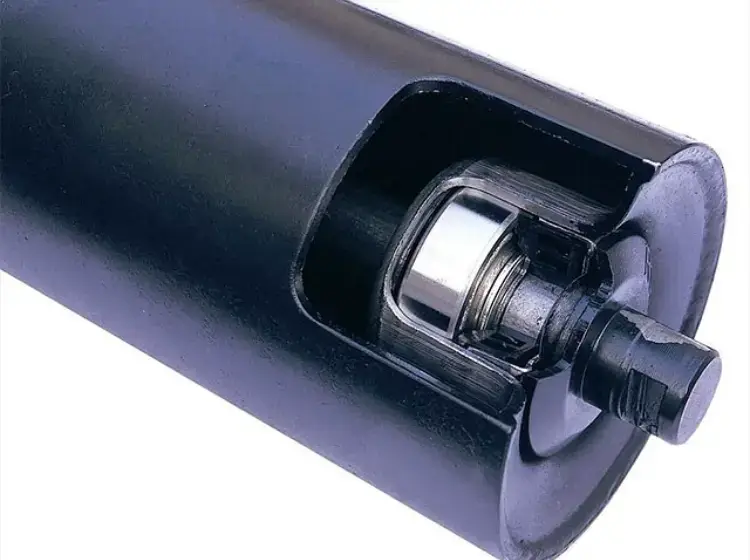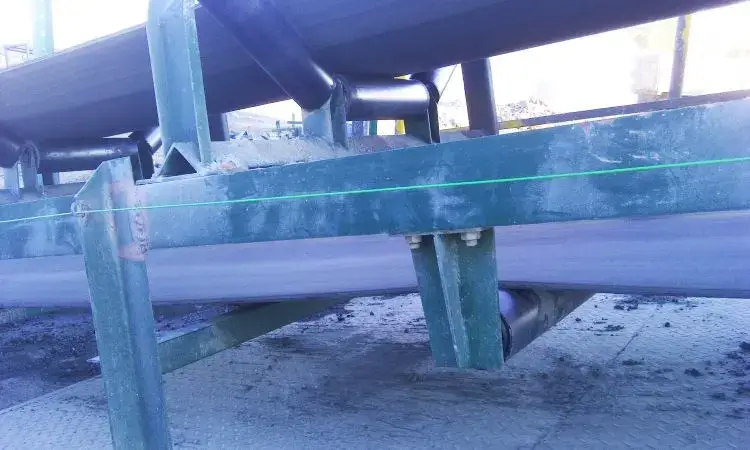Belt conveyors, as a core component of bulk material transport, are widely used in industries such as mining, ports, metallurgy, and chemicals. However, due to long-term operation or improper maintenance, belt conveyors are prone to several common faults.

Belt Deviation During Operation
Misalignment of Drive Pulley or Tensioning Pulley
Fault Manifestation:
The belt continuously deviates to one side during operation, reducing transport efficiency and potentially causing safety hazards.
Solution:
- Adjust the position of the drive pulley's bearings to align it parallel to the conveyor belt.
- If the belt drifts to the right, tighten the right tension screw; if it drifts to the left, tighten the left screw.
Misaligned Rollers or Uneven Belt Joints
Fault Manifestation:
The belt's deviation aligns with the roller axis deviation, causing unstable operation.
Solution:
- Check the roller bracket position and recalibrate it to ensure perpendicular alignment with the conveyor’s centerline.
- For uneven belt joints, disassemble and reconnect the belt, ensuring the joint is straight.
Improper Loading Position or Frame Placement
Fault Manifestation:
Material piles up on one side of the belt, causing off-center operation.
Solution:
- Ensure materials are loaded evenly at the center of the belt.
- Adjust the conveyor frame to maintain a level position and avoid uneven stress.
Belt Slippage and Solutions
Insufficient Belt Tension
Fault Manifestation:
The belt cannot drive effectively during operation, leading to slippage or stalling.
Solution:
- Adjust the tensioning device to increase the belt’s tensile force.
Smooth Pulley Surface or Stiff Bearings
Fault Manifestation:
Insufficient friction between the pulley and the belt, causing slippage.
Solution:
- Clean the pulley surface or apply a layer of adhesive material to enhance friction.
- Dismantle the bearings, lubricate them, or replace damaged bearings.
Improper Pulley Bearing Installation
Fault Manifestation:
The pulley fails to rotate normally, affecting the belt’s driving performance.
Solution:
- Check the bearing installation position to ensure alignment with the pulley’s centerline.
Please contact us using the info below if you have any questions about Common Faults and Troubleshooting Methods for Belt Conveyors

Roller Stoppage and Solutions
Fault Manifestation:
The rollers fail to rotate, causing the belt to sag or deviate.
Solution:
- Adjust the roller installation position to ensure proper contact between the belt and the rollers.
Roller Bearings Lack Lubrication or Are Damaged
Fault Manifestation:
Roller bearings are jammed or fail completely, affecting the belt’s smooth operation.
Solution:
- Dismantle the rollers, clean the bearings, and re-lubricate them. Replace severely damaged bearings with new ones.
Belt Tears and Preventive Measures
Tears Caused by Foreign Objects
Fault Manifestation:
Sharp objects get stuck between the feed hopper or deflector and the belt, causing surface damage.
Solution:
- Screen materials before feeding to remove objects that might cause tears.
- Regularly inspect the feeding area and address problems promptly.
Belt Deviation Leading to Frame Friction
Fault Manifestation:
Prolonged deviation causes friction between the belt and frame components, leading to tears.
Solution:
- Adjust rollers and tensioning devices to correct belt deviation.
- Add edge protection to the belt to reduce friction damage.

Joint Tears and Optimization Strategies
Poor Joint Quality
Fault Manifestation:
Cracks or breakage occur at the belt joint.
Solution:
- Reconnect the belt joint using high-strength, wear-resistant materials to improve joint stability.
Over-Tensioning by Tensioning Device
Fault Manifestation:
Excessive tension causes the joint area to bear excessive load, leading to breakage.
Solution:
- Adjust the tensioning device to avoid over-tightening the belt.
How to Effectively Improve Belt Conveyor Efficiency
Regular Inspection and Maintenance
Conducting regular inspections helps detect and address problems promptly. During inspections, focus on core components such as pulleys, rollers, and bearings.
Customized Design and Auxiliary Equipment
Select suitable conveyor configurations based on specific working conditions. For example, using a telescopic stacker in long-distance transport scenarios can significantly improve efficiency and reduce maintenance costs.
Application of Advanced Materials and Technologies
The use of new materials, such as steel-cord belts or high-temperature-resistant belts, can enhance the overall lifespan and performance of the equipment. Meanwhile, introducing intelligent monitoring devices enables real-time system monitoring, further optimizing operational efficiency.



